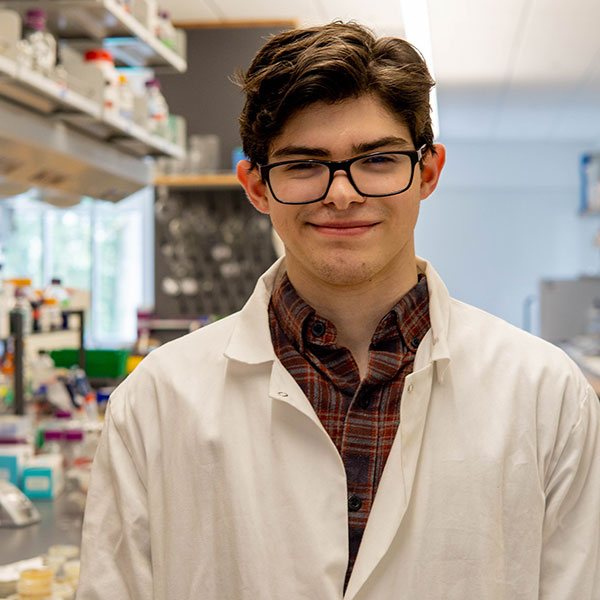
Interrogation of a conserved overlap between cofactor and substrate binding domains to facilitate crosstalk-induced conformational changes in Class A Flavin Monooxygenases: A case study of 6-Hydroxynicotinate-3-Monooxygenase

Name: Sam L. Belsky
Major: Biochemistry and Molecular Biology
Minors: Mathematics, Spanish
Advisors: Mark Snider, Annastassia Gallo; Sara Martin (second reader)
Stereo- and regioselective hydroxylation of aromatic rings is extremely difficult to achieve through the use of traditional organic chemistry techniques. As a result, scientists have begun turning towards biosynthetic methods to perform such reactions. One class of enzymes which have already proven useful in such endeavors are Class A Flavin Monooxygenases (FMOs). The goal of this thesis was to determine the significance of a newly uncovered motif well-preserved throughout a subset of these enzymes. Using the enzyme 6-hydroxynicotinate-3-monooxygenase (NicC) as a case study, we explore the mechanistic significance of this conserve motif, primarily focusing on a G43P NicC variant. Using steady-state and stopped-flow kinetic methods, herein we elucidate the role this motif plays in enzyme-substrate crosstalk in the hope that furthering our understanding of such mechanisms will facilitate further application of this Class A FMOs in biosynthesis of new therapeutic chemicals. The data collected throughout this study demonstrates that mutations to this motif result in substrate inhibition, suggesting that this domain is responsible for the signal transduction which induces conformational changes towards the substrate and coenzyme binding domains.
Posted in Comments Enabled, Independent Study, Symposium 2023 on April 14, 2023.
4 responses to “Interrogation of a conserved overlap between cofactor and substrate binding domains to facilitate crosstalk-induced conformational changes in Class A Flavin Monooxygenases: A case study of 6-Hydroxynicotinate-3-Monooxygenase”
Related Posts
Related Areas of Study
Mathematics
Numbers + patterns + structures multiplied by a zest for analysis and inquiry
Major MinorBiochemistry & Molecular Biology
Biology and Chemistry combine in an interdisciplinary program for students with a passion for molecular events.
Major


What was the most difficult part of writing an IS?
I think at least with regard to my IS – and this was true with both the introduction and the discussion especially, the most difficult aspect of composing my thesis was finding the most effective, succinct, and straight forward way in which to communicate my ideas. The topic of my thesis was extremely technical, so finding a way to logically lay out both the rationale for my research and what I ultimately found took a while.
Can you comment on why it is to hard to sterically/Regio-selectively hydroxylate an aromatic ring with traditional organic chemistry methods?
Successfully performing the regiospecific hydroxylation of an aromatic ring is very difficult primarily because the use of any aqueous solvent and the addition of a catalyst can lead to multiple undesired hydroxylations. Of course the addition of certain functional groups to the aromatic ring may help direct a hydroxylation, but since a catalyst is still required for this type of reaction, additional hydroxylations are likely to occur. Stereospecific hydroxylations of aromatic rings require the dearomitization of the aromatic ring, to generate a chiral carbon bound to 4 distinct atoms. This would mean that the aromatic reactant has a functional group present at the carbon in question prior to reaction, making the addition of another functional group unfavorable due to steric restraints. On top of this, aromatic rings tend to be very stable, making it more likely that if an aromatic compound is hydroxylated, it’s much more likely to occur at any carbon with no functional group.